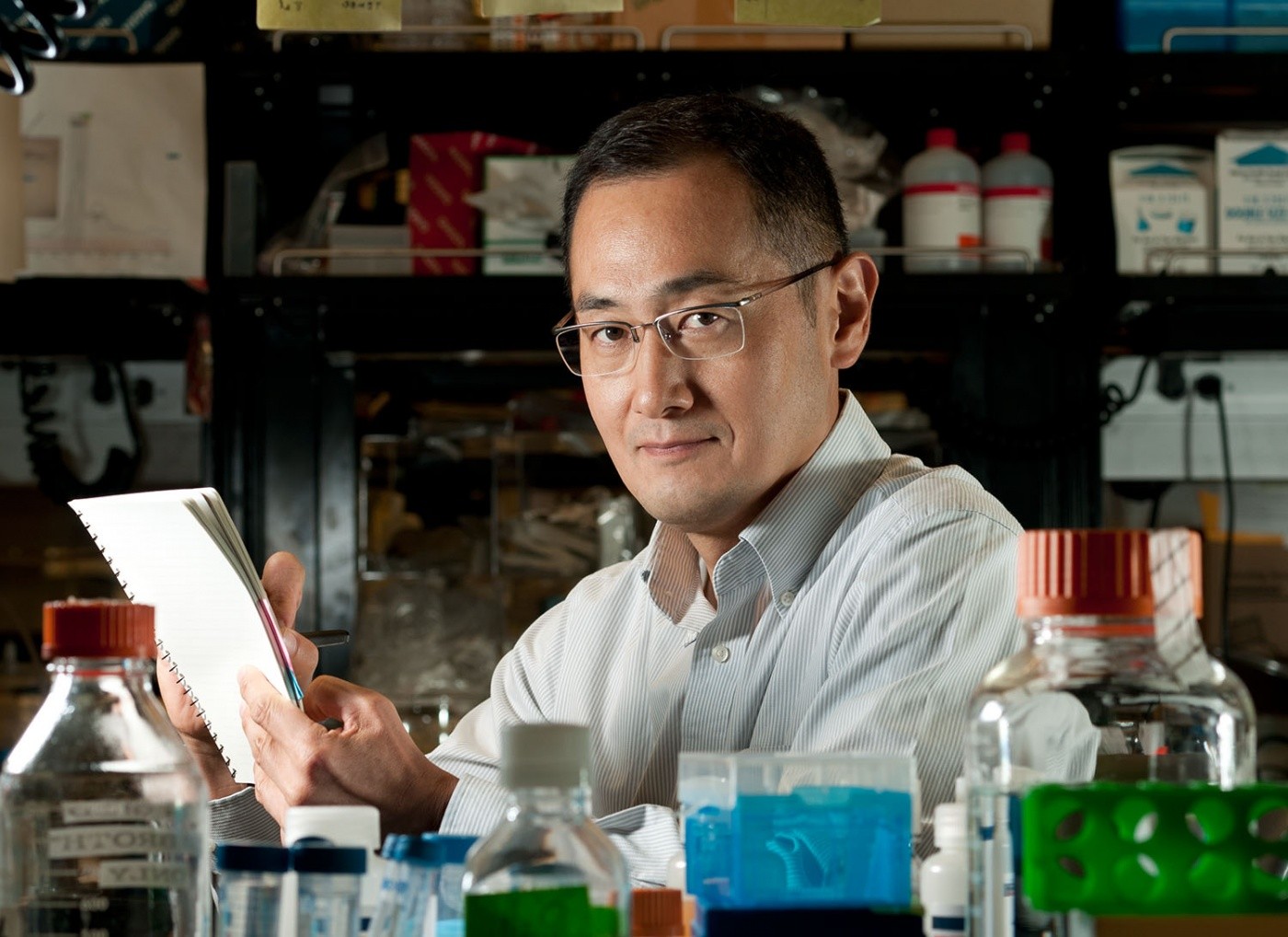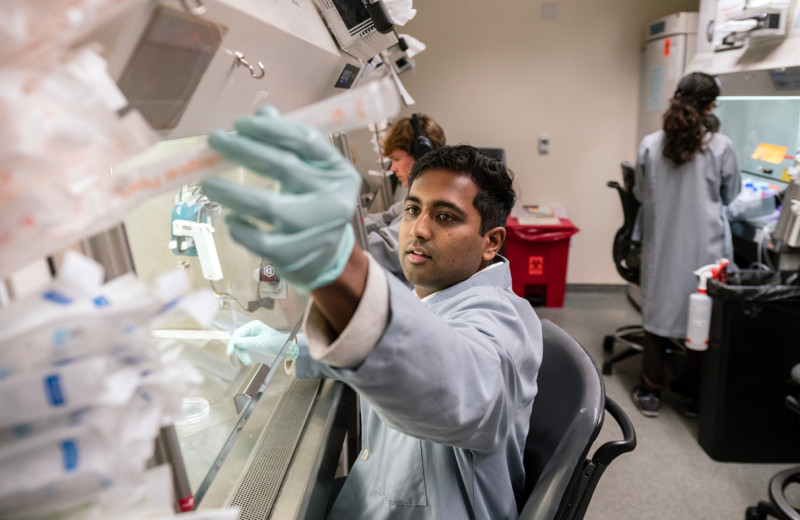Gladstone NOW: The Campaign Join Us on the Journey✕

Shinya Yamanaka is refining his Nobel Prize–winning discovery of cellular reprogramming. [Photo: Chris Goodfellow]
The discovery of cell reprogramming by Shinya Yamanak, MD, PhD, changed the way scientists see cell biology, but the details of how it works are still being defined. In a recent paper, the labs of Dr. Yamanaka and Bruce Conklin, MD, show how one key factor—NANOG—is involved in the process.
“As we noted in the paper, the name of the transcription factor NANOG comes from Irish mythology,” said Dr. Conklin. “It refers to the land of youth, which seems appropriate for a factor that promotes pluripotency—the ability of a cell to transform into all other cells.”
The study was published in the March 30 issue of the Proceedings of the National Academy of Sciences USA and reports findings made between a team of scientists from Gladstone and the University of California at San Francisco and San Diego, Scripps, Sanford-Burnham, and Stanford.
In his Nobel Prize–winning discovery, Dr. Yamanaka showed that four transcription factors could reprogram an adult cell to a stem cell–like state. Transcription factors bind to specific sequences of DNA to turn a particular gene on or off. Two of those four factors are OCT4 and SOX2. NANOG interacts with both, but their interaction was not well understood.
Yohei Hayashi, PhD, a postdoctoral fellow with Dr. Yamanaka, led the research team in their discovery that the interaction between NANOG and OCT4 is critical for reprogramming adult cells. They determined the crystal structure of NANOG bound to OCT4 with x-ray diffraction, which is the “gold standard” for determining protein structure. They then mutated specific amino acids in NANOG to identify exactly which of its 305 amino acids actually bind to DNA. These results help define exactly how NANOG and OCT4 work together at a molecular level in pluripotency.
“How pluripotency and reprogramming work are some of the most important issues in stem cell biology and regenerative medicine,” said Dr. Yamanaka. “For example, pluripotency is controlled by key factors that, in turn, regulate the transcription of other factors. By defining the interaction between NANOG and OCT4, we have made a significant step toward understanding how they work together during reprogramming.”
The paper lists 19 authors who contributed work with multiple technologies. Key contributors include co-corresponding author and UCSF professor Robert Fletterick, PhD, co-first author and UCSF postdoctoral scholar, Laura Caboni, PhD, and Gladstone staff research investigator Kiichiro Tomoda, PhD.
The Genome Editing Playbook Is Different in Neurons
The Genome Editing Playbook Is Different in Neurons
The striking findings of a new study could influence how gene therapies are designed for many genetic diseases.
News Release Research (Publication) Neurological Disease Conklin Lab Doudna Lab CRISPR/Gene EditingCIRM Awards $7.5 Million in Discovery Grants to Gladstone Investigators
CIRM Awards $7.5 Million in Discovery Grants to Gladstone Investigators
Two ambitious research projects led by Gladstone investigators are boosted by funds from the California Institute for Regenerative Medicine.
Grants News Release Congenital Heart Disease Cardiovascular Disease Bruneau Lab Conklin Lab CRISPR/Gene Editing Human Genetics Regenerative MedicineScience in Seconds | Gladstone Researchers Tackle Charcot-Marie-Tooth (CMT) Disease
Science in Seconds | Gladstone Researchers Tackle Charcot-Marie-Tooth (CMT) Disease
Bruce Conklin and his team at Gladstone are tackling Charcot-Marie-Tooth (CMT) disease, the most common inherited neurological disorders—for which there is currently no cure.
Gladstone Experts Conklin Lab CRISPR/Gene Editing



